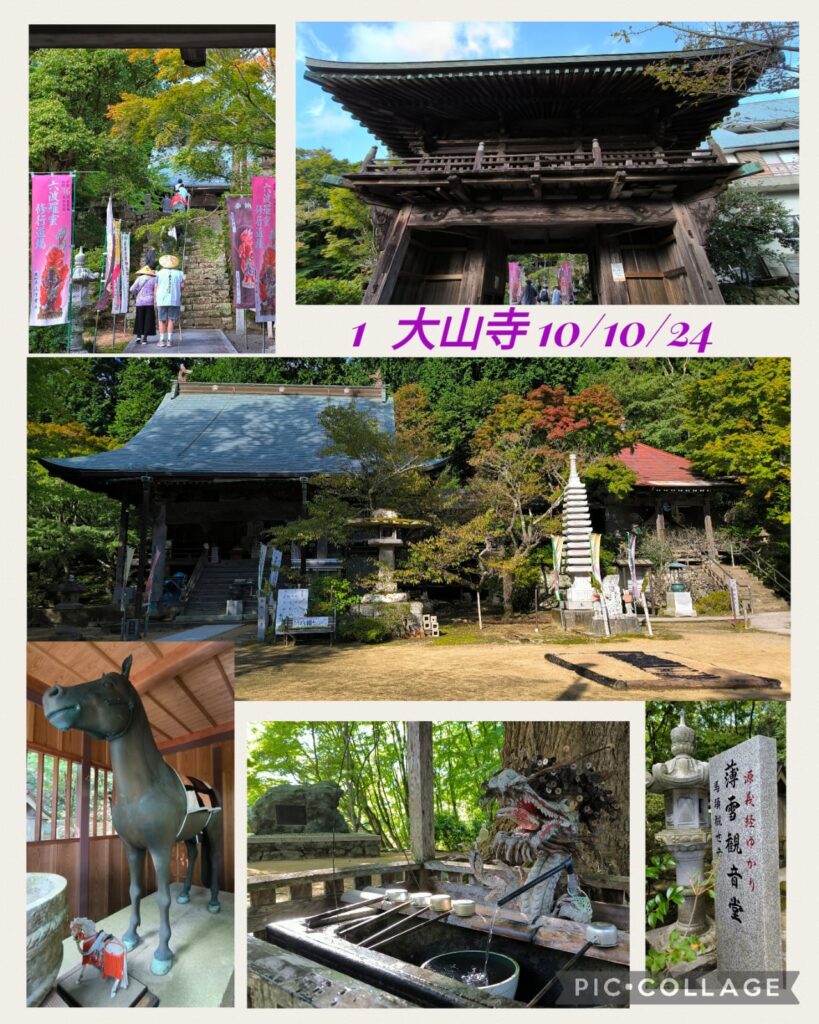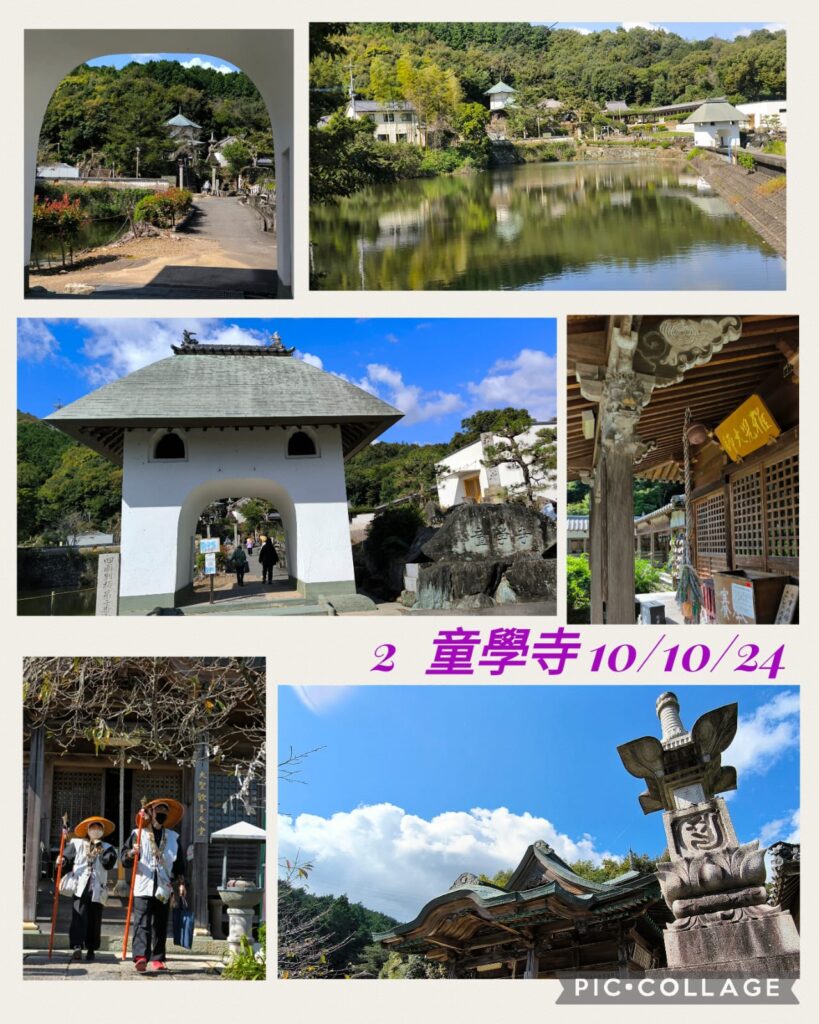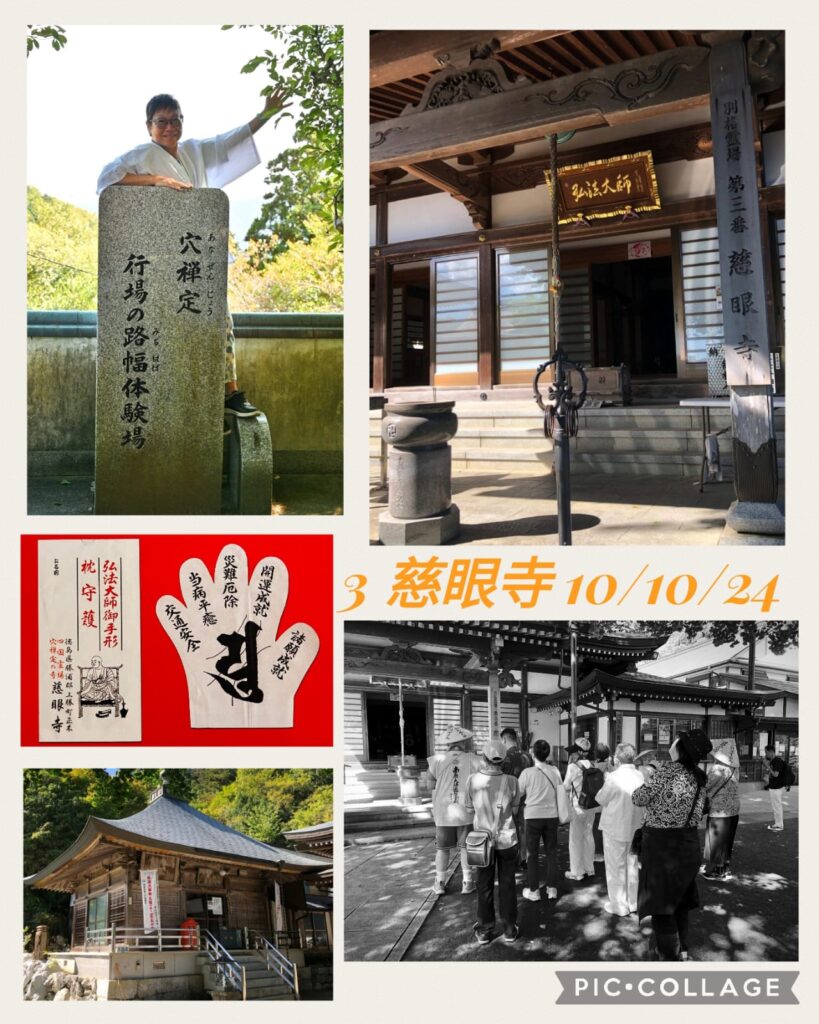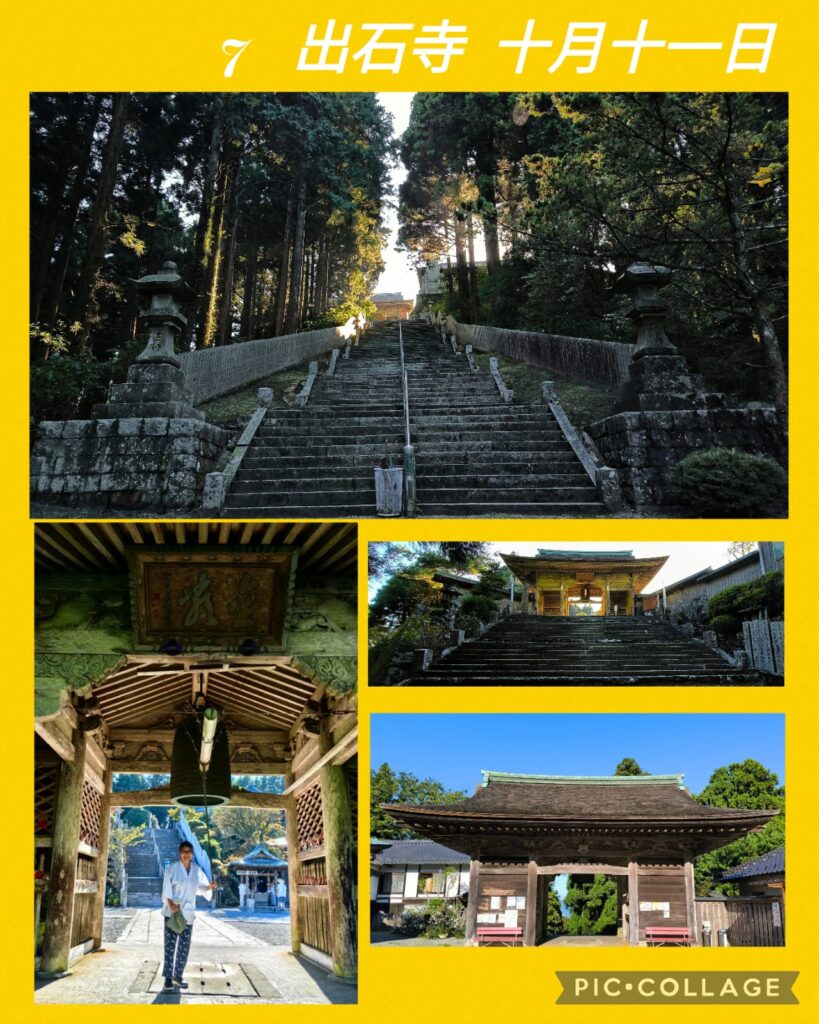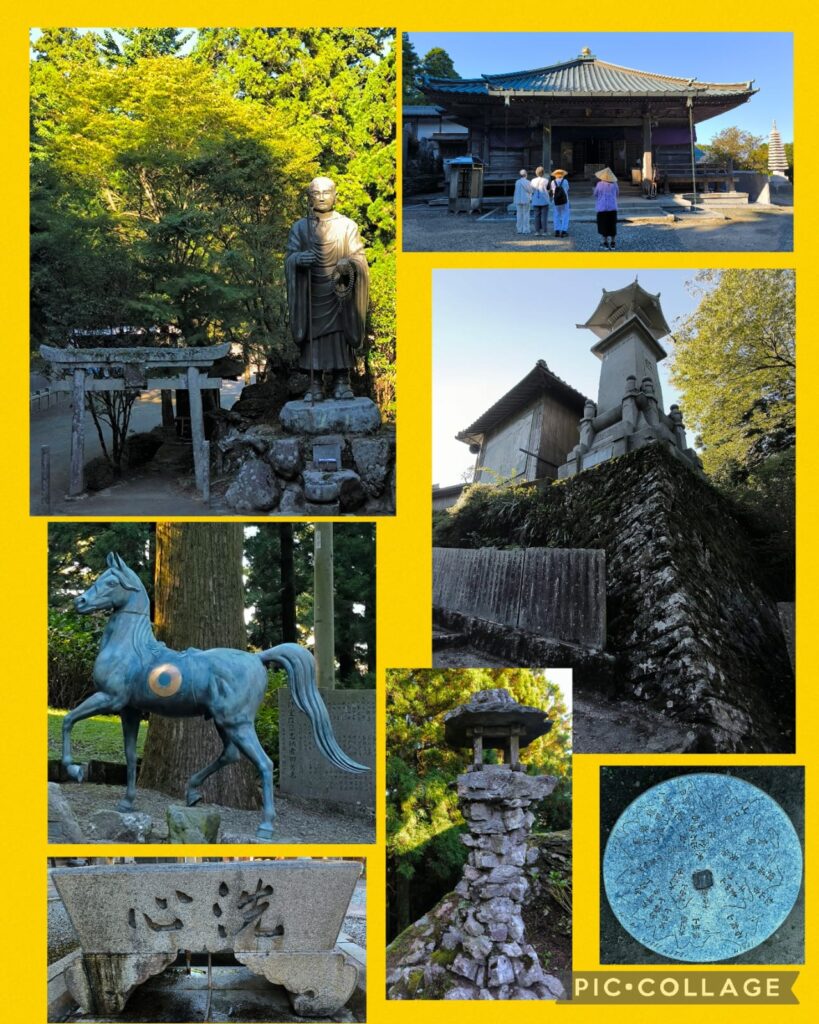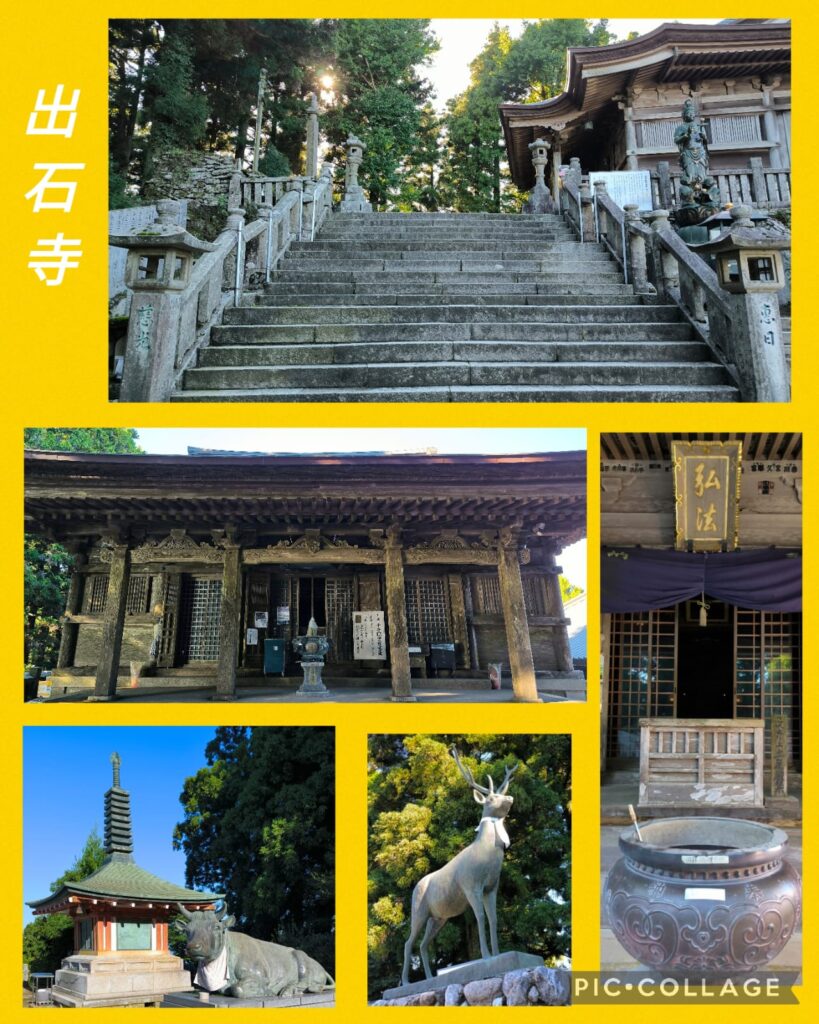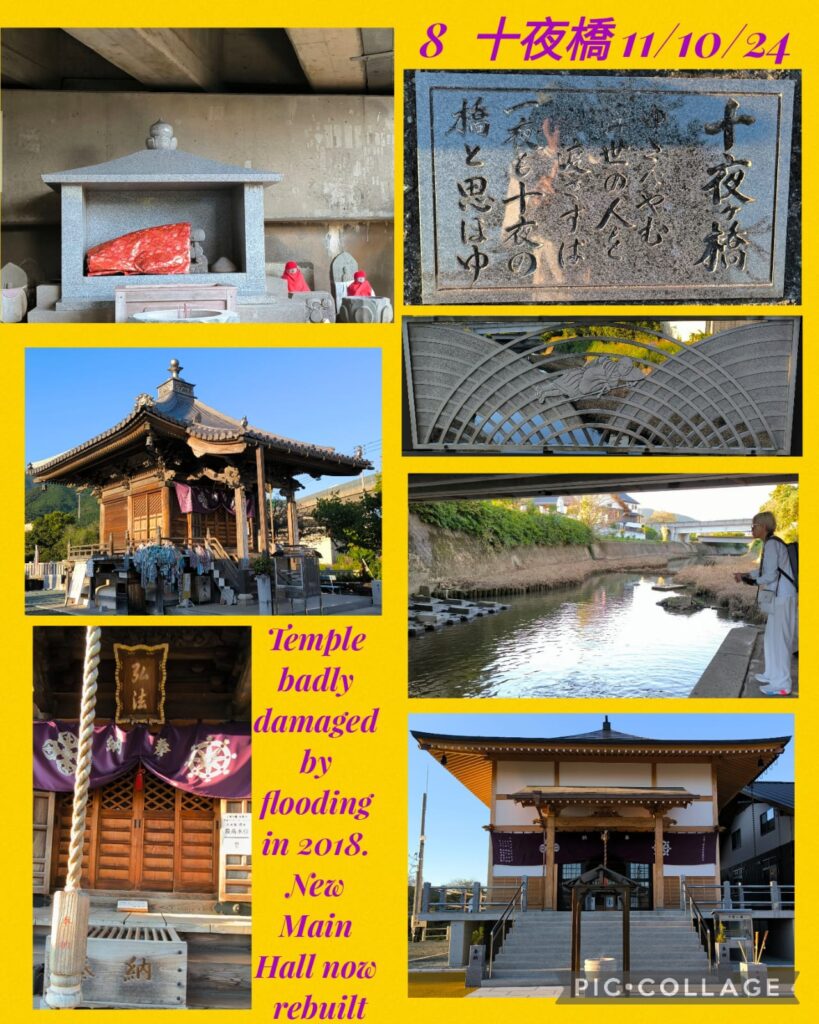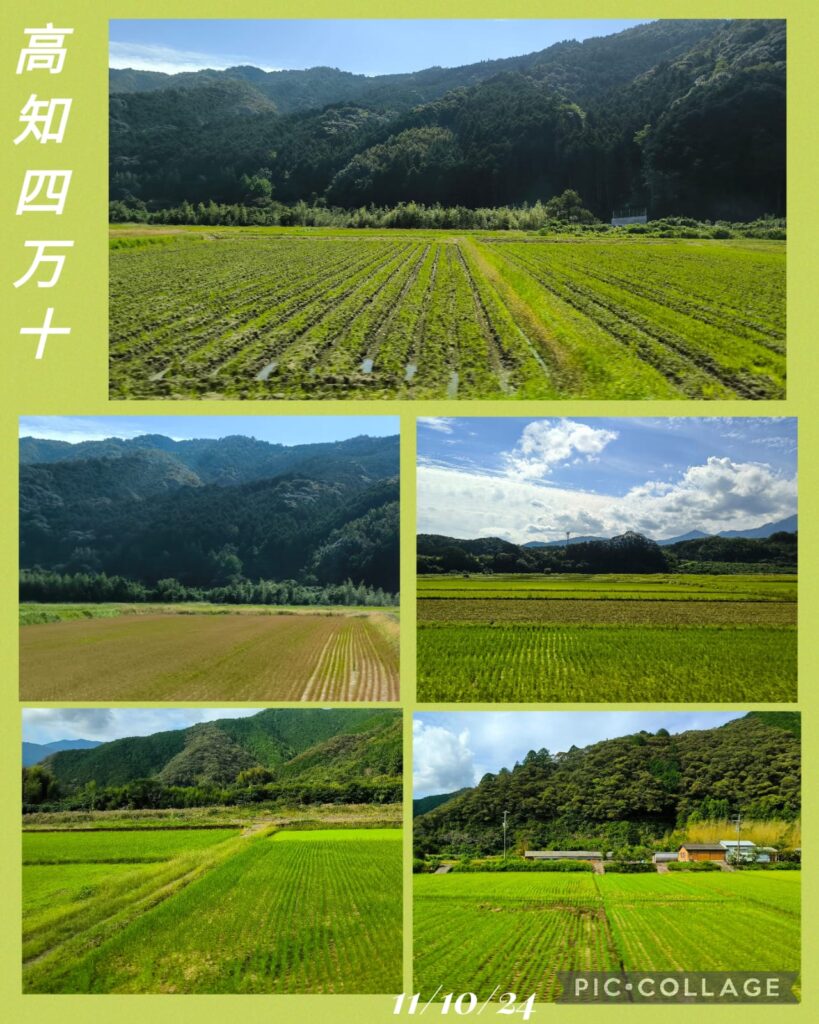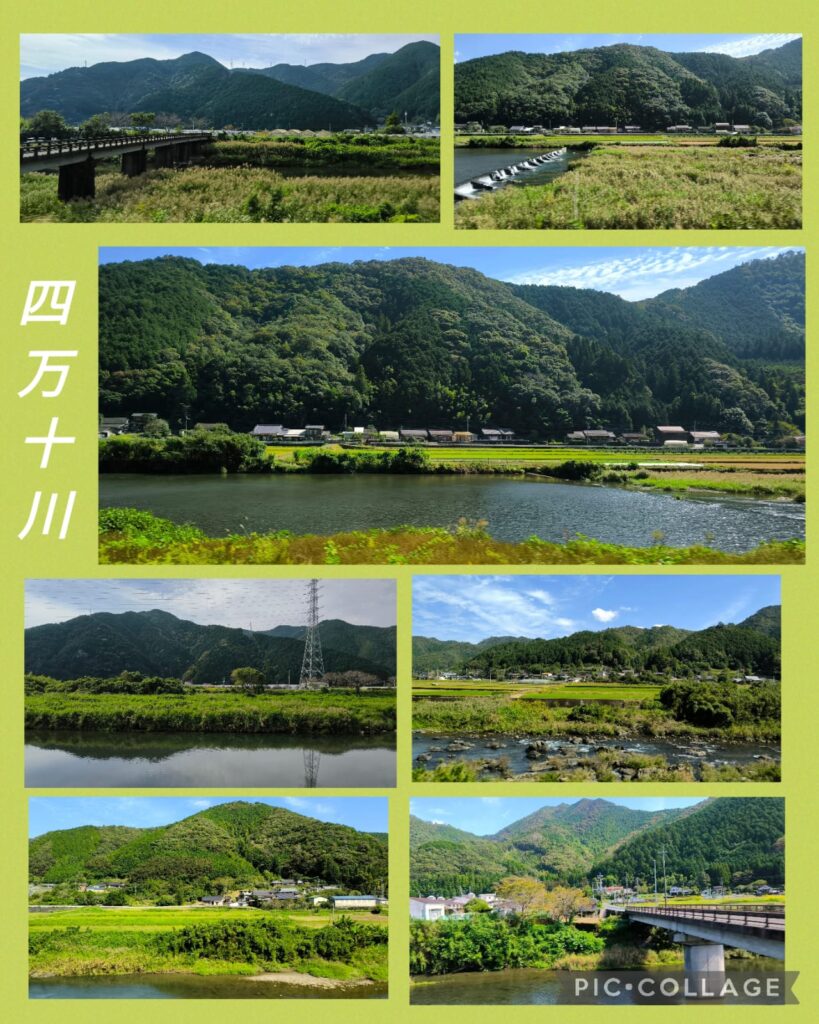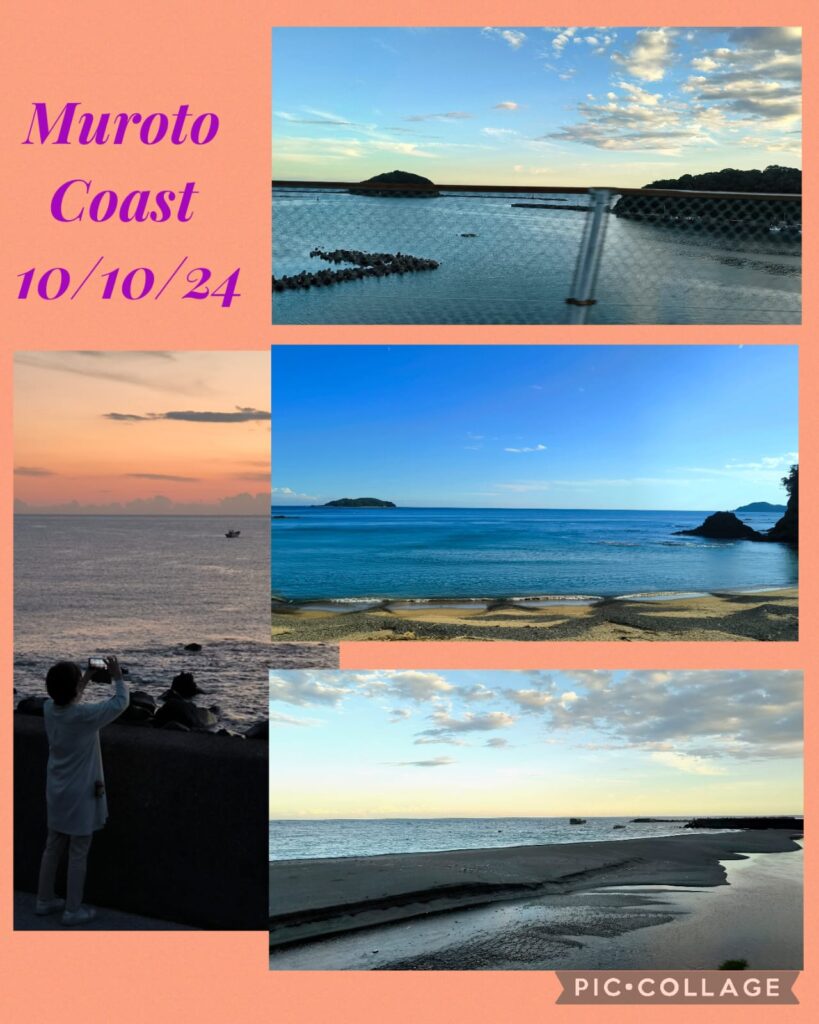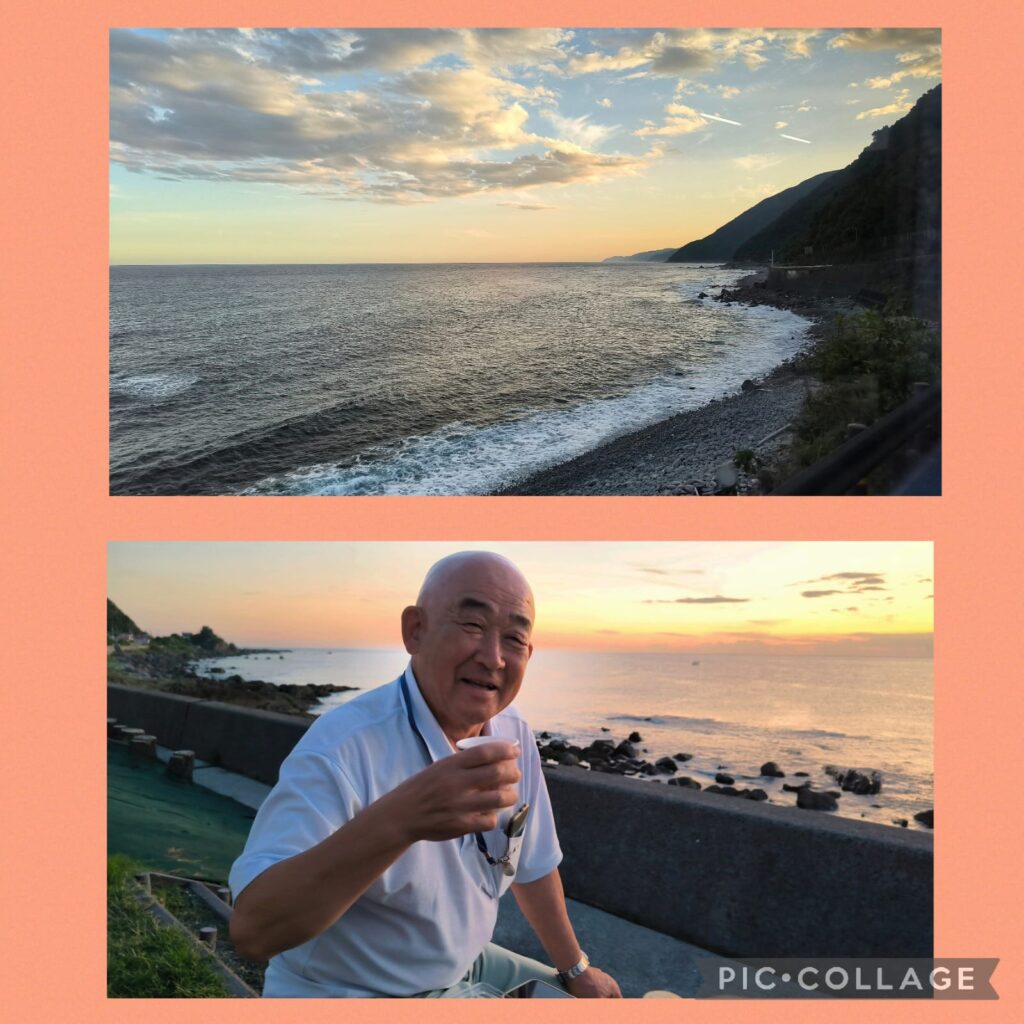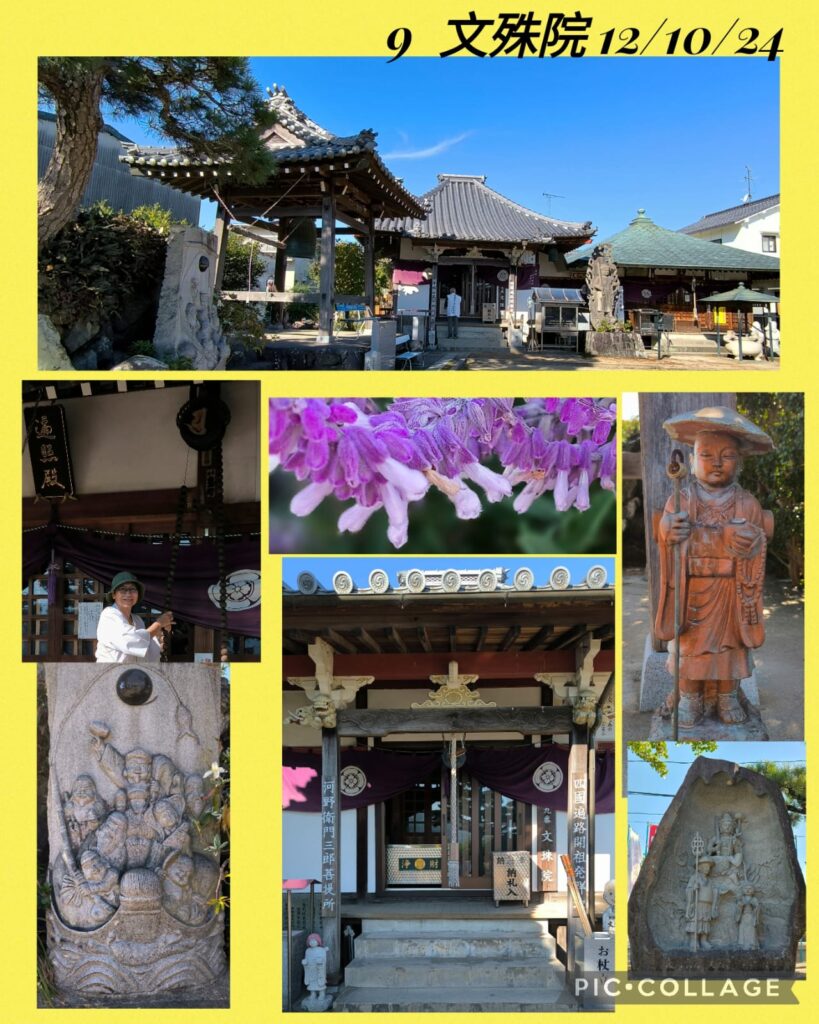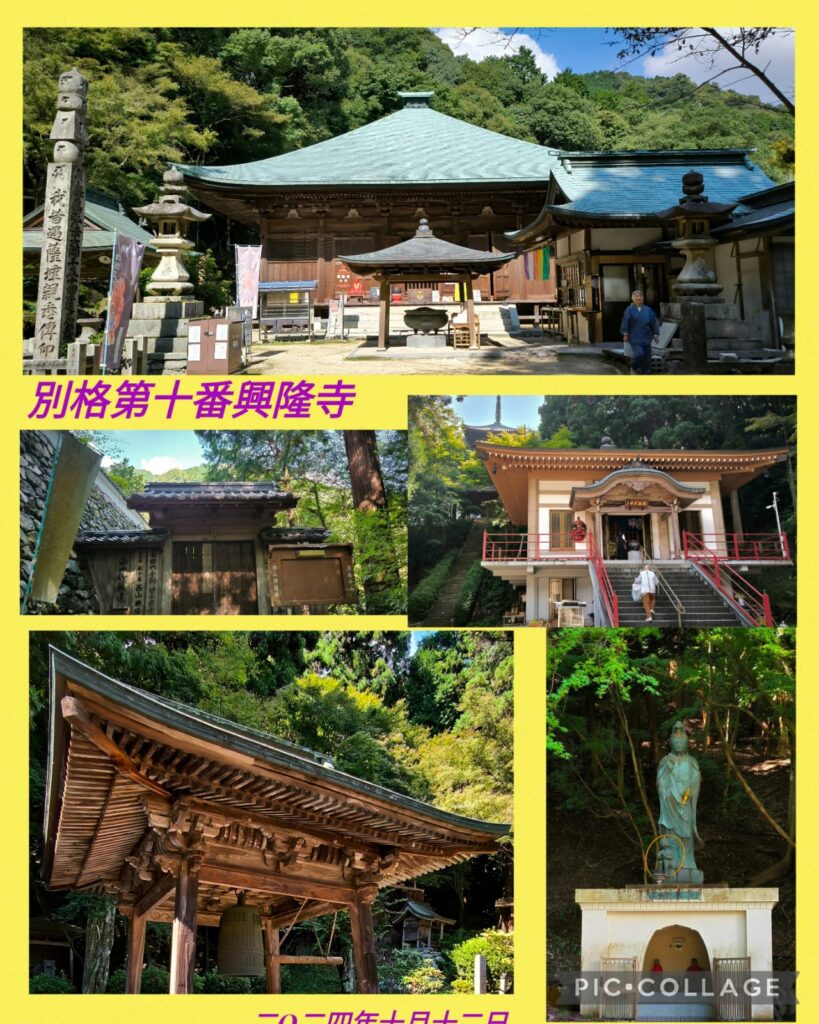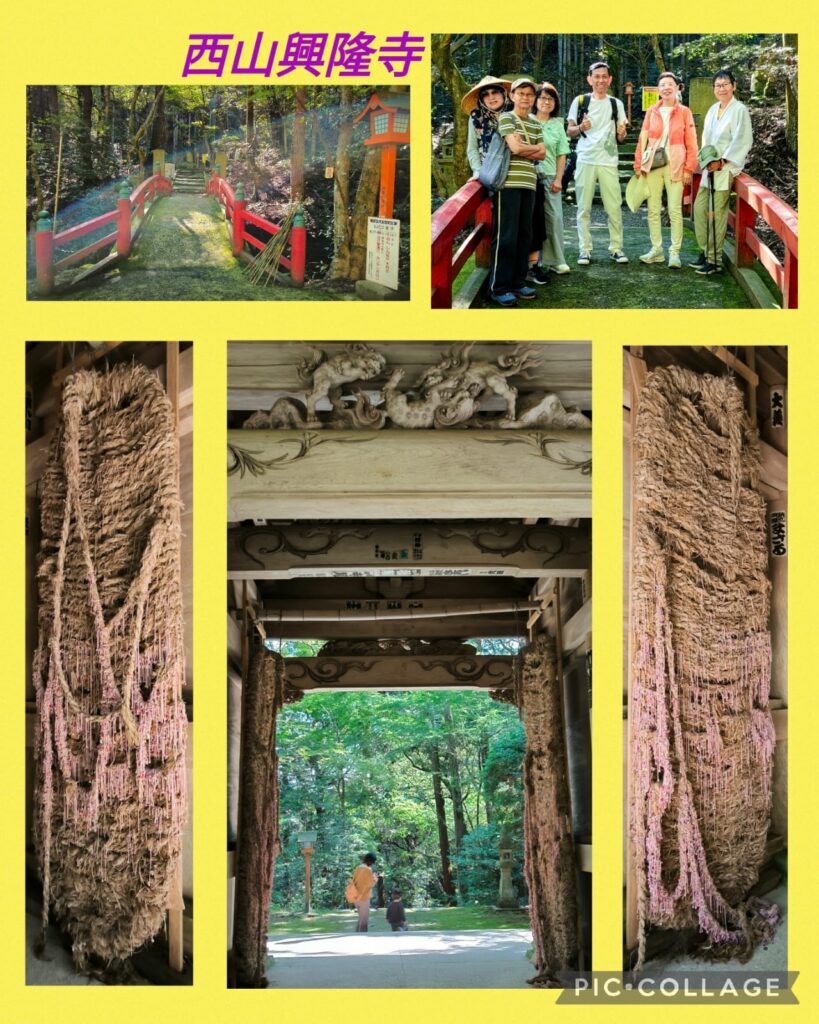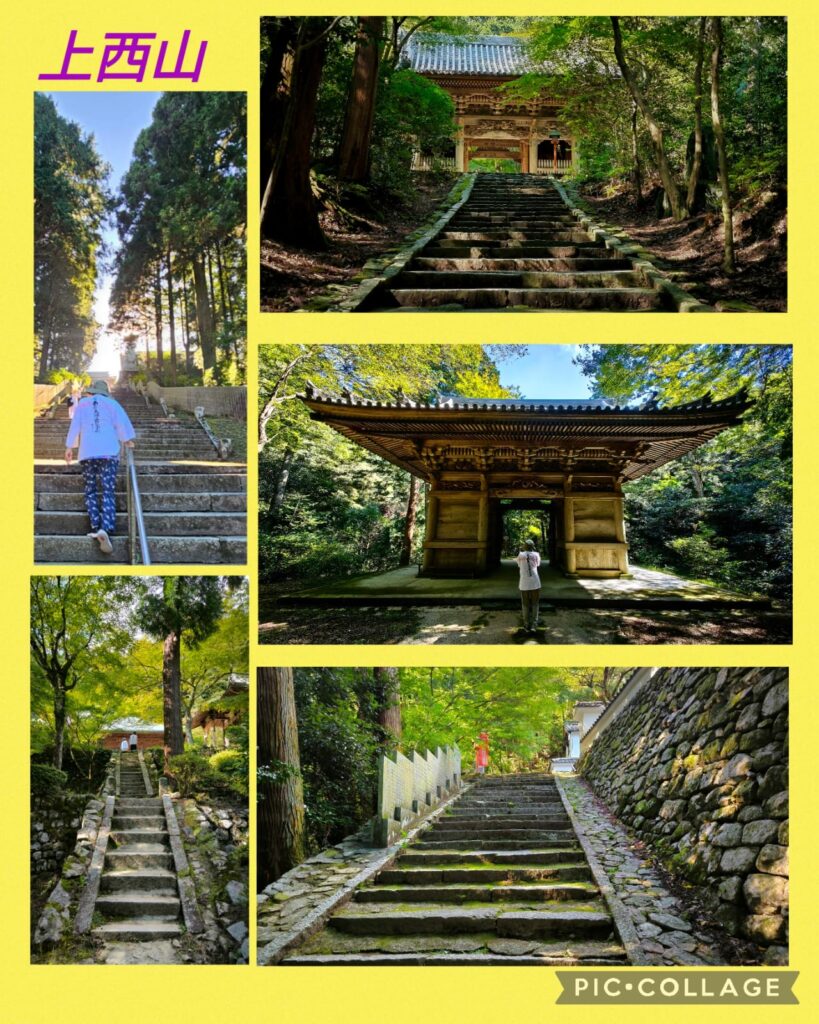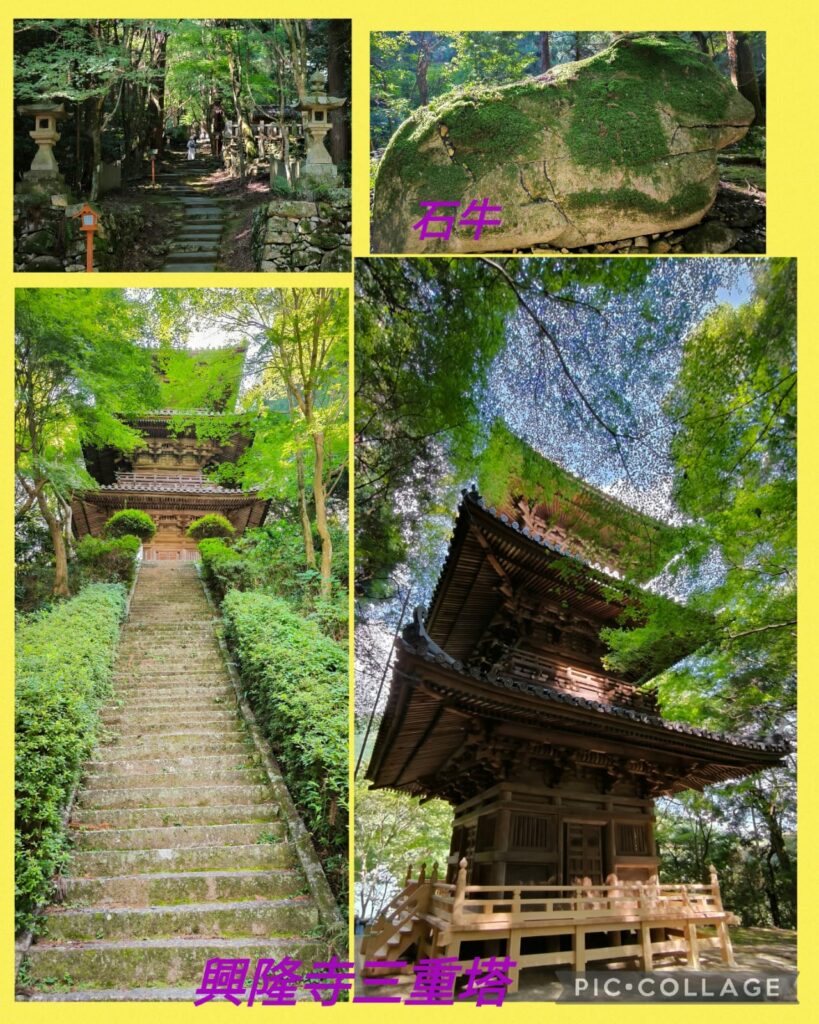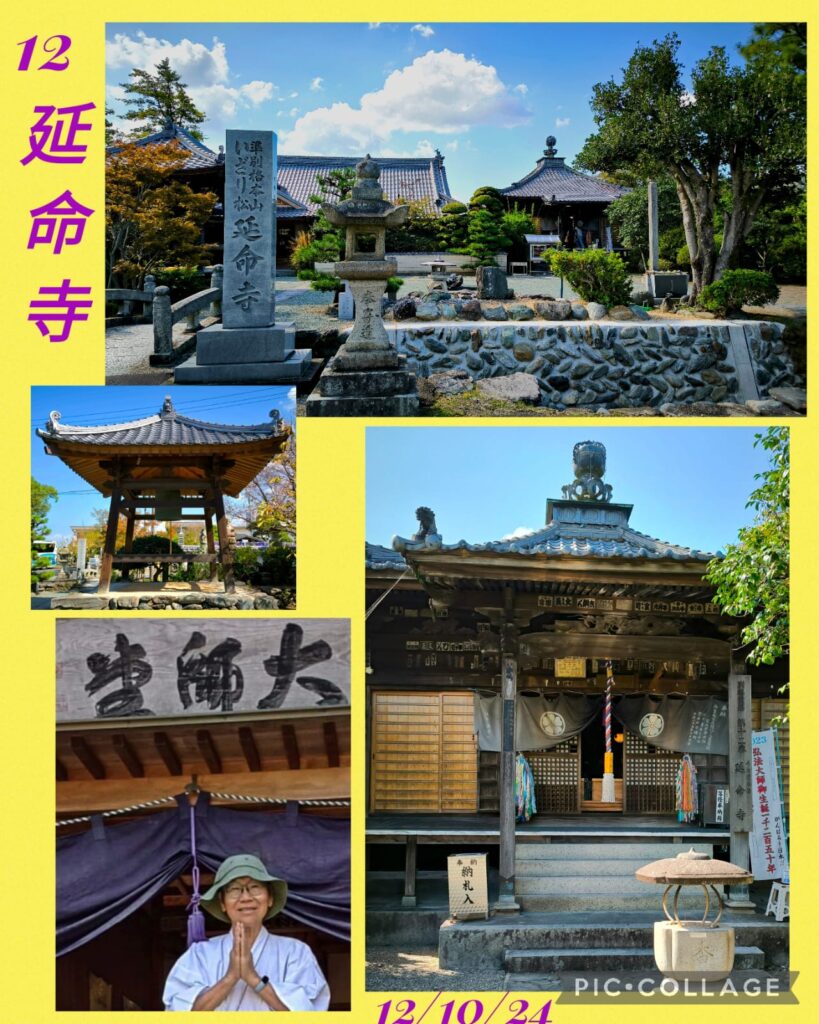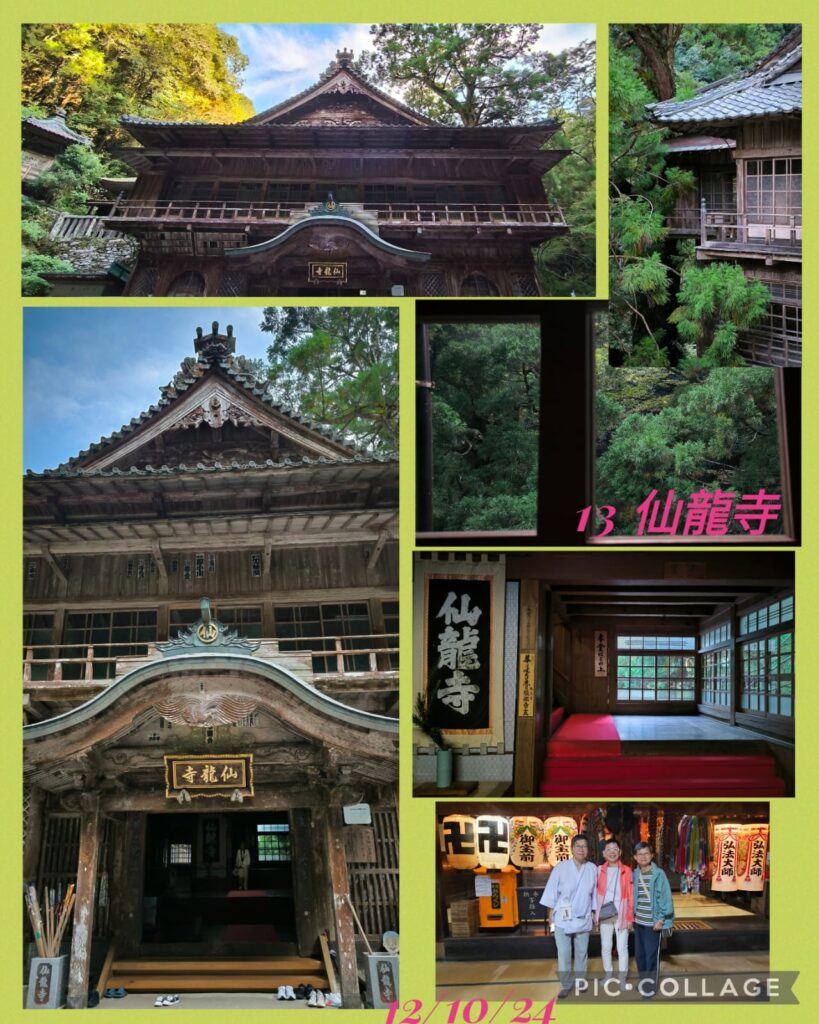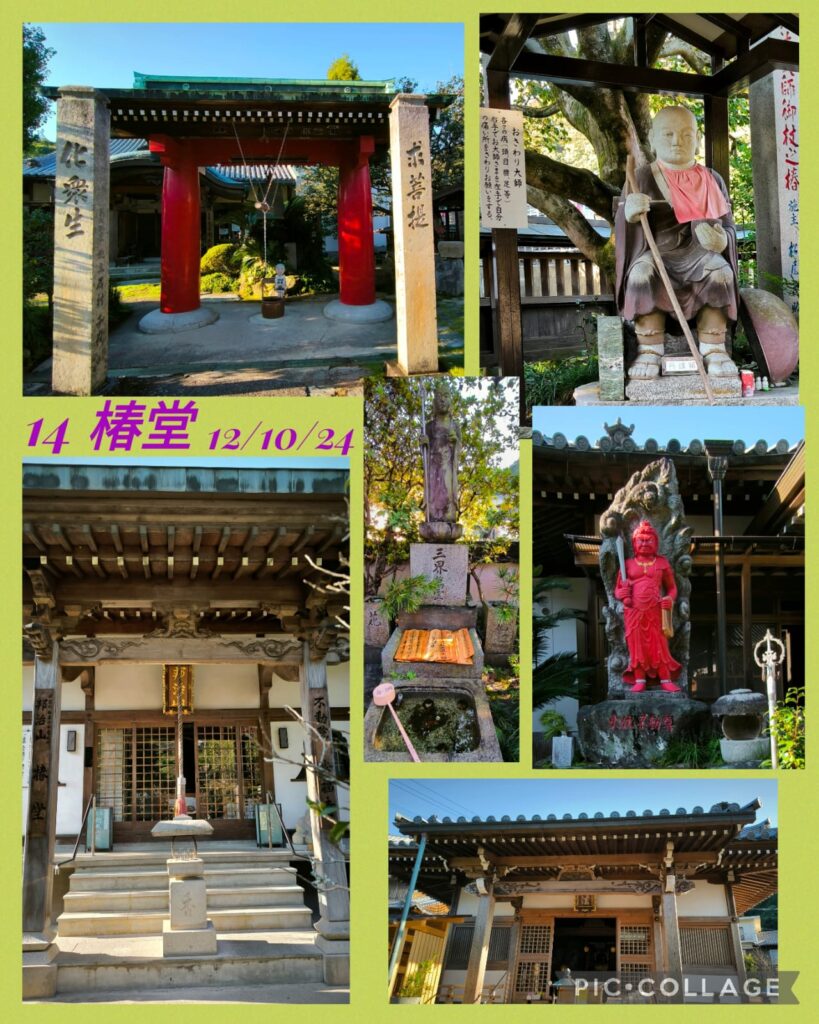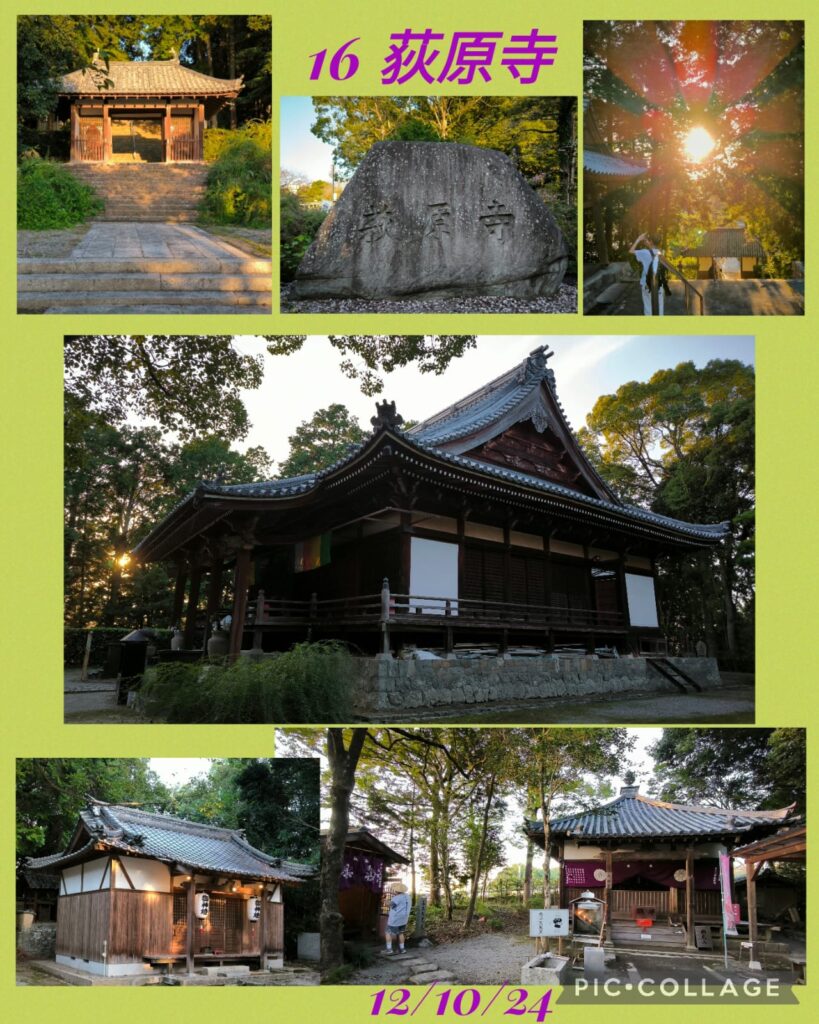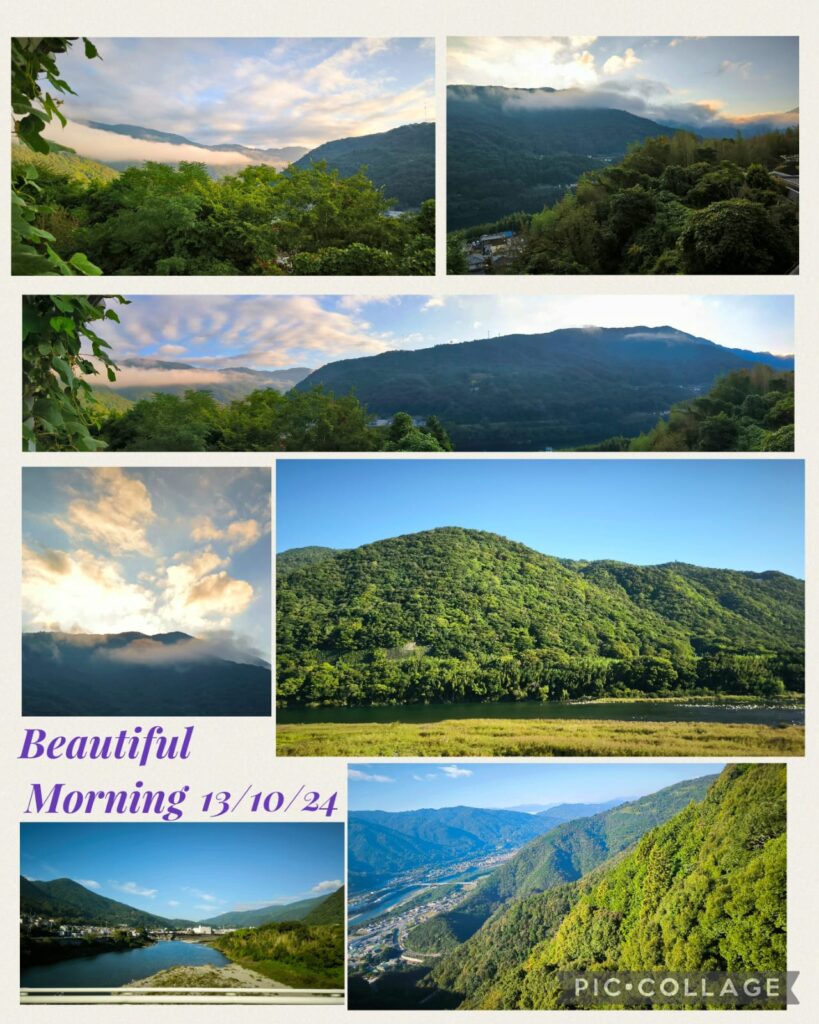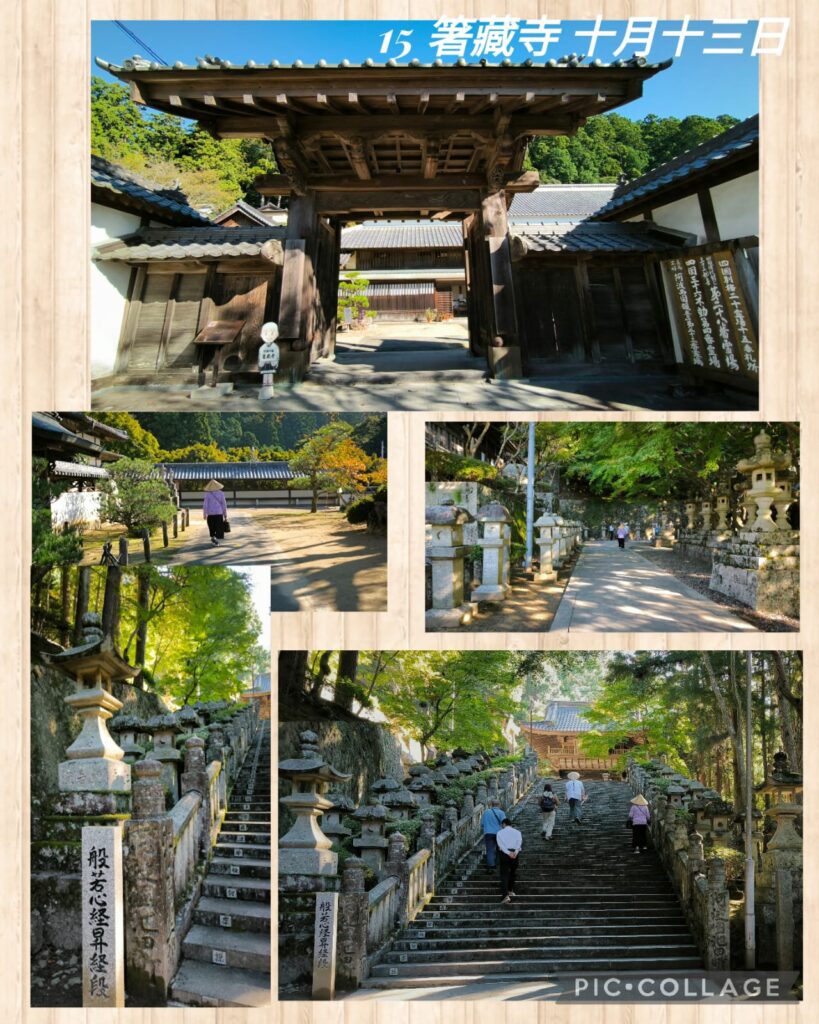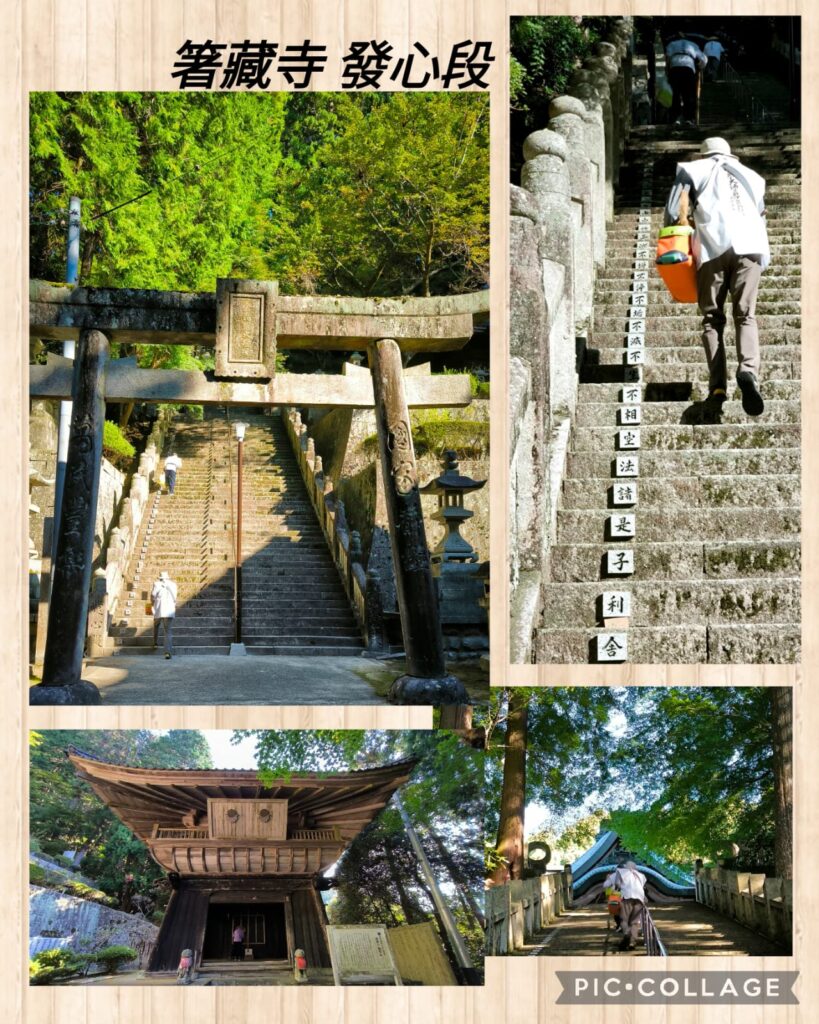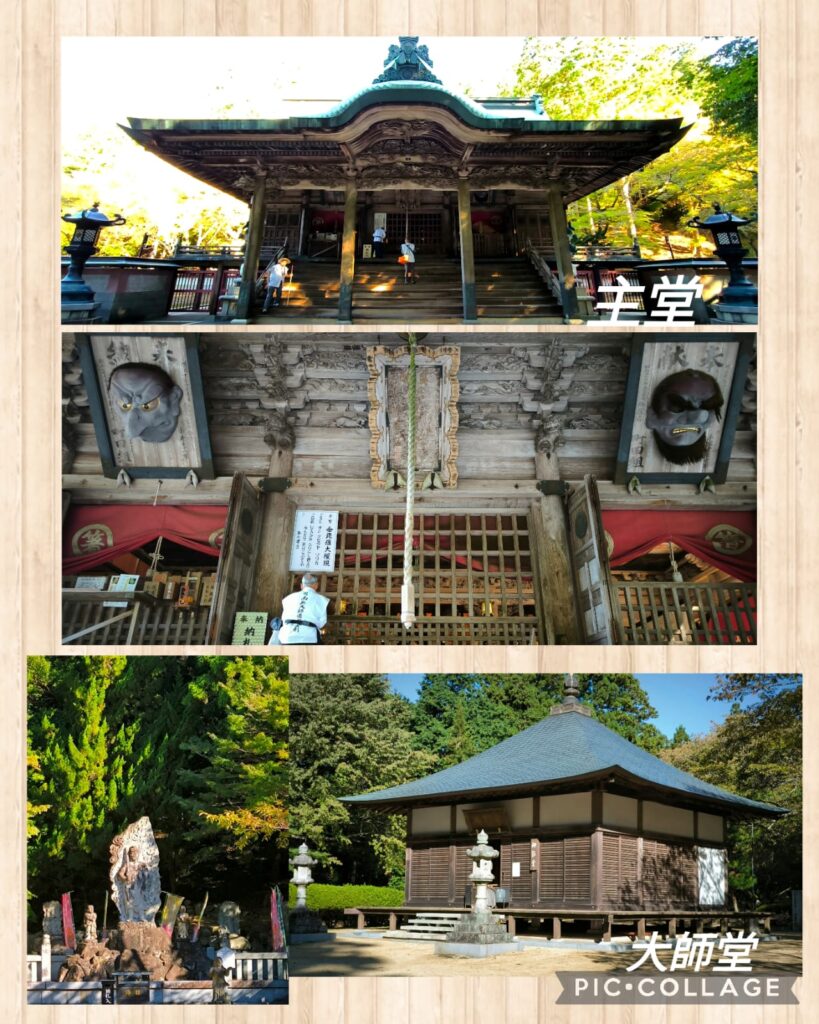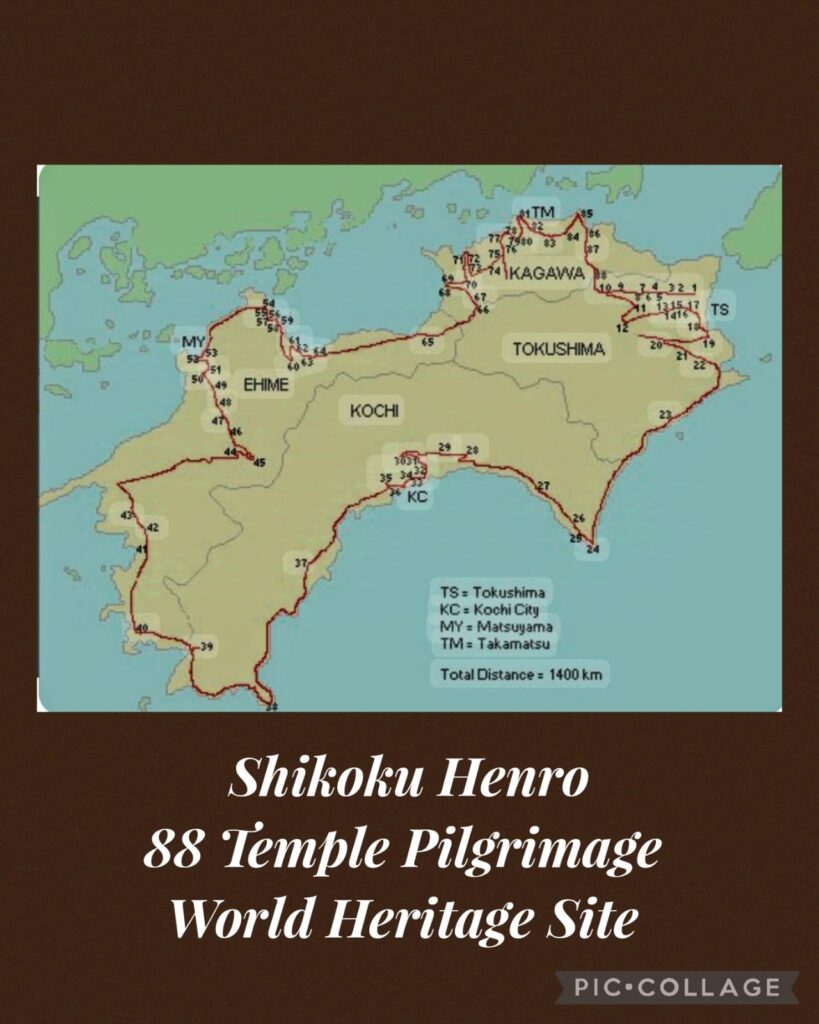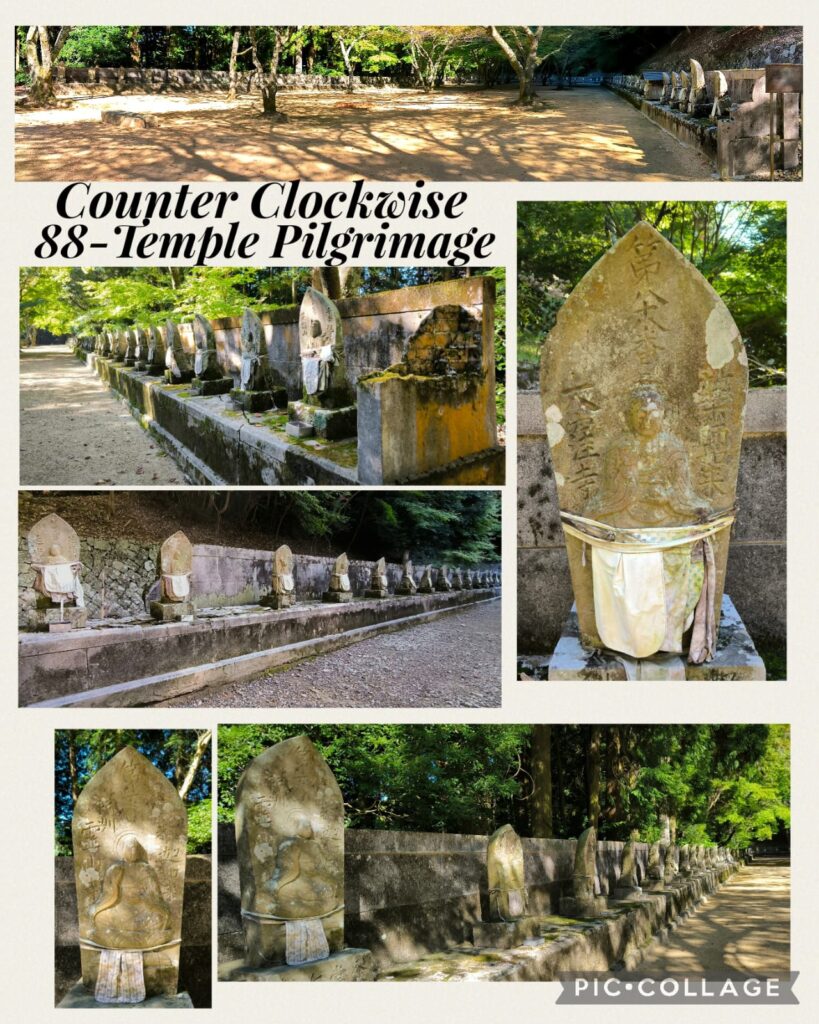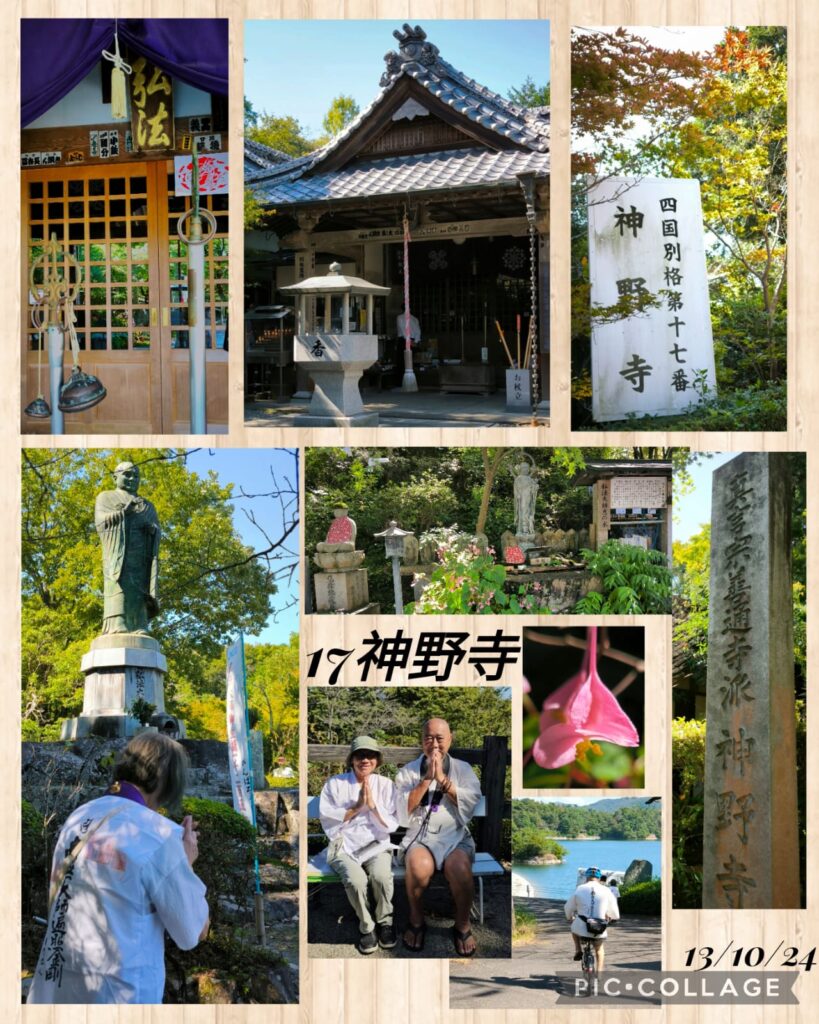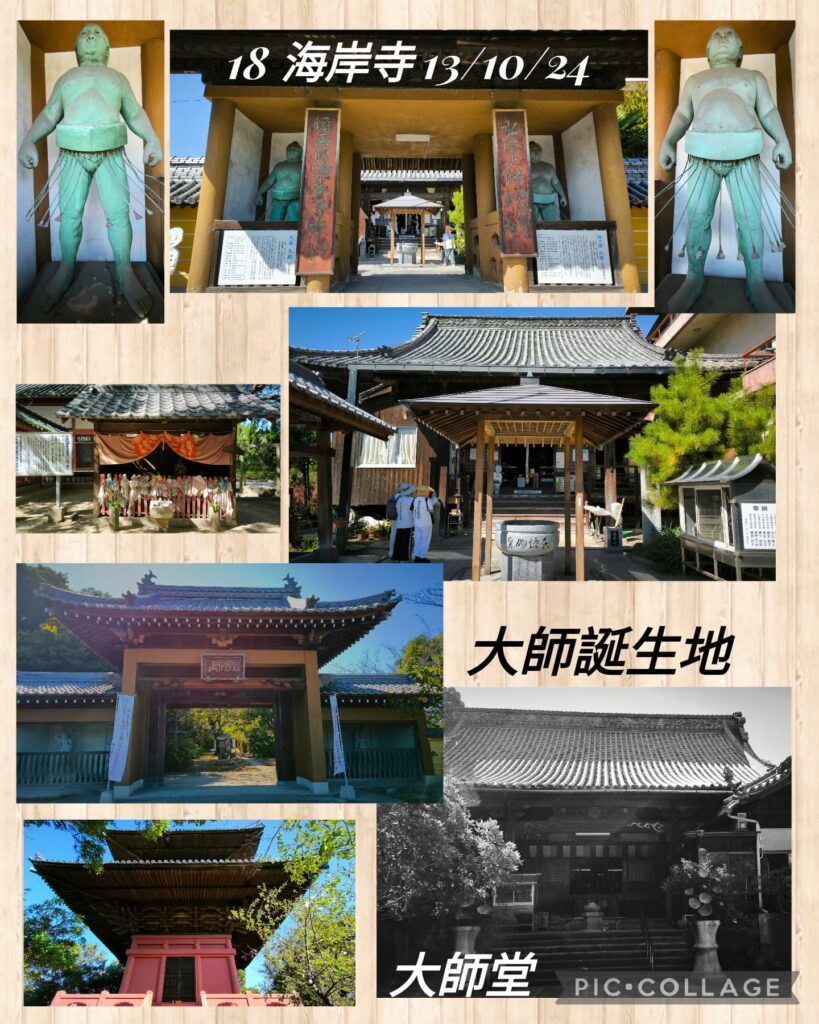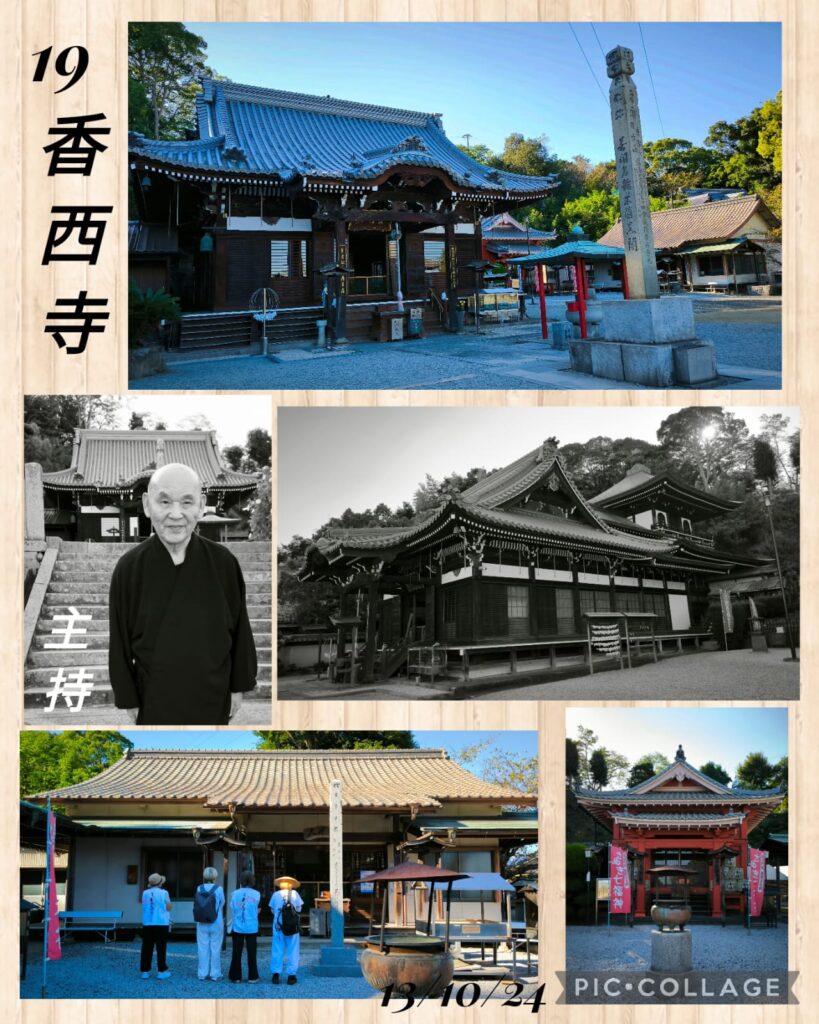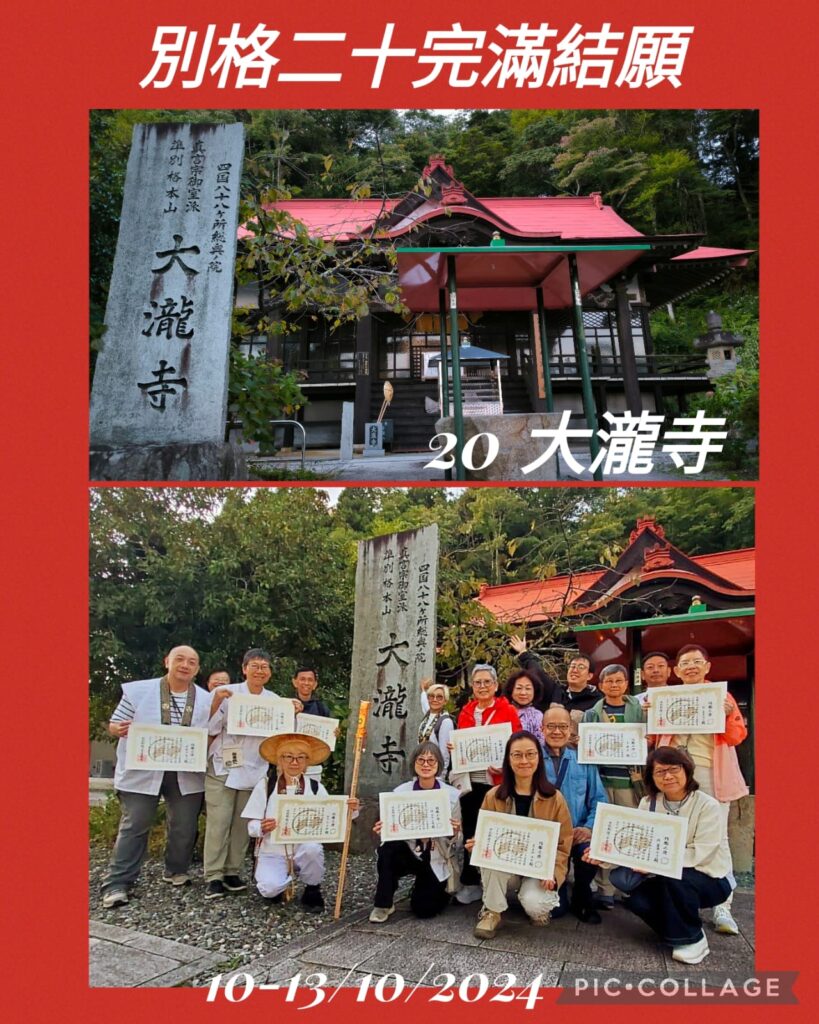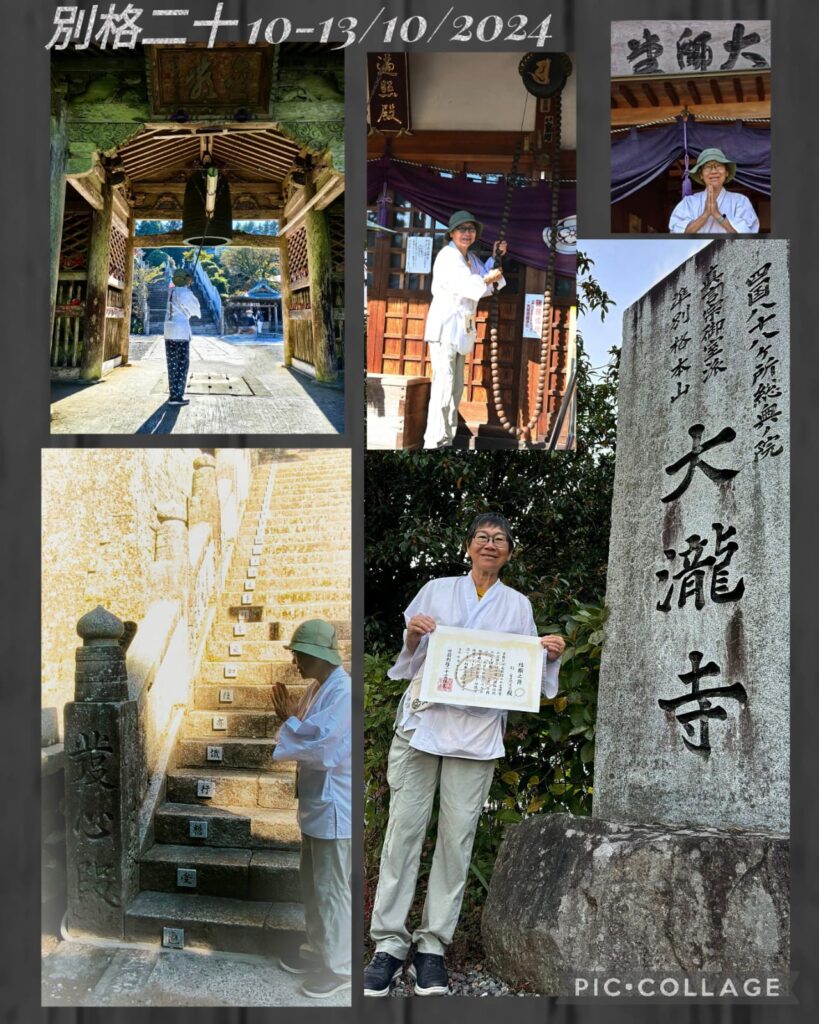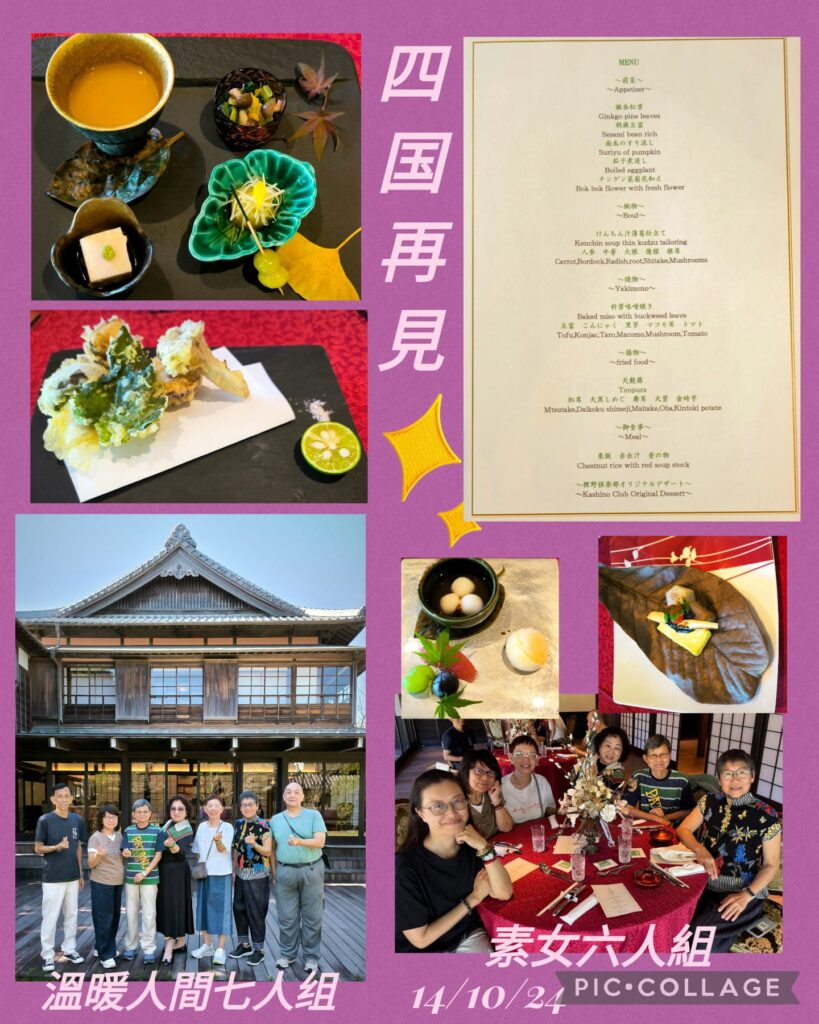After having completed the 88-Temple Pilgrimage last November, I decided to join a pilgrimage to visit 20 sacred sites associated with Kukai, Kobo Daishi (774-835). This 20 sacred site pilgrimage route celebrated its 50 anniversary this year. We had a small group led by MY with 14 participants. covering over 1000km in four days in Shikoku. We began and finished the journey at Tokushima visiting one site in Kochi, four in Kagawa, six in Tokushima and nine in Ehime.
October 9 Hong Kong – Osaka – Tokushima
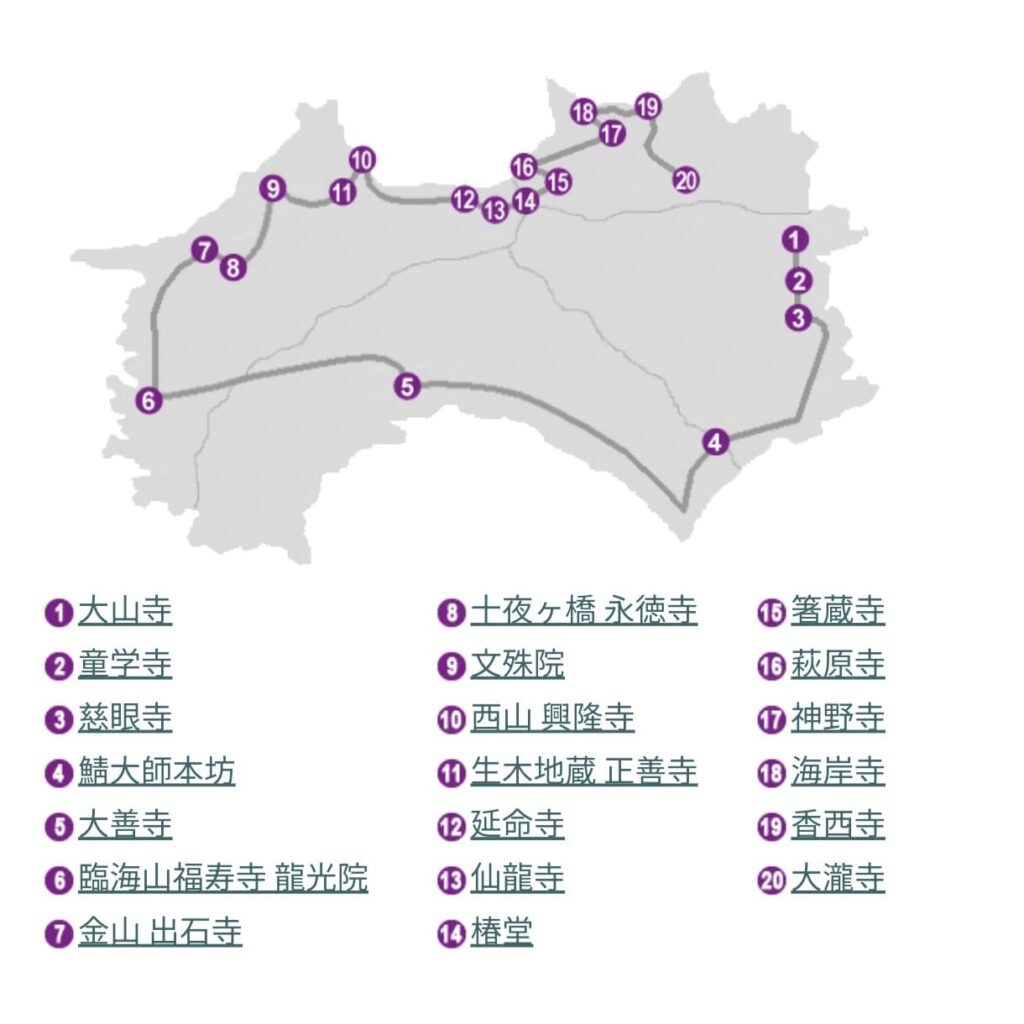
The group taking a 8am-flight from HK to Osaka, arrived at Osaka Kansai Airport after 1 pm. I waited for them at the arrival hall. By the time the group was ready to set off, it was 2:30 pm. We boarded a comfortable bus and drove all the way to a shop in Tokushima to buy noukyocho (stamp book), name slips, other pilgrim regalia (incense, candles etc). It got dark shortly after 5:30pm. We arrived at JR Clement Hotel next to Tokushima train station before 7pm. A long travel day!
October 10: 4 Temples- Temple 1 – 4 in Tokushima
We basically followed the same routine setting off at 8 am. When we arrived at each site, we followed the same procedures including washing/cleansing our hands and mind, lighting incense/candles, put name slips in a box, reciting Heart Sutra, chanting mantra for the principal image in the main hall. We then moved to the Daishi Hall and repeated the same procedure but without chanting the mantra of the principal image. While some of of the sacred sites are located in built-up area/village and close to each other, a few are located high in the mountain. On a few occasions, we had to drive about two hours to reach the site. One the first and second day, we only visited four temples.
We visited Temple 1 -Taisan-ji with Senju-kanseon-bosatsu as the Principle Image. We had to walk a few flights of staircases. The temple ground is peaceful. It did not take long to arrive at Temple 2-Dogaku-ji which Principle Image is Yakuyoke-yakushi-nyorai. It is said that Kobo Daishi had played in this site when he was a child. Hence the name.
In Temple 3- Jugen-ji, there is a cave at the top of the hill behind the main hall where Kobo Daishi had medicated. As a return trip would take an hour, we did not visit the cave. Pilgrims have to pass a body fitness test here: I passed the test as I was able to squeeze through the narrow space behind a marble stone plaque as shown in the photo below. The Principle Image of this temple is Juichimen- kanseon-bosatsu.
Temple 4 – Sabadaishi-Honbo which Principle Image is Kobo Daishi is unique. In the Daishi Hall, there is a stone mackeral with a story. A horseman once used abusive language at and refused to give a salted mackerel to Daishi. Then when his horse reached Umabikizaka, it suddenly began to suffer. The horseman then realised the monk he had seen was a Great Master and went to apologize and offer the mackerel to cure the horse’s illness. Once Daishi gave the horse divine water, it immediately recovered. When Daishi blessed the salted mackerel on Hosho Island, it came back to lifeand swam away. The horseman then built a hermitage there making it a sacred place for salvation for people in the past and future.
October 11: 4 Temples: Temple 5 in Kochi and 6-8 in Ehime
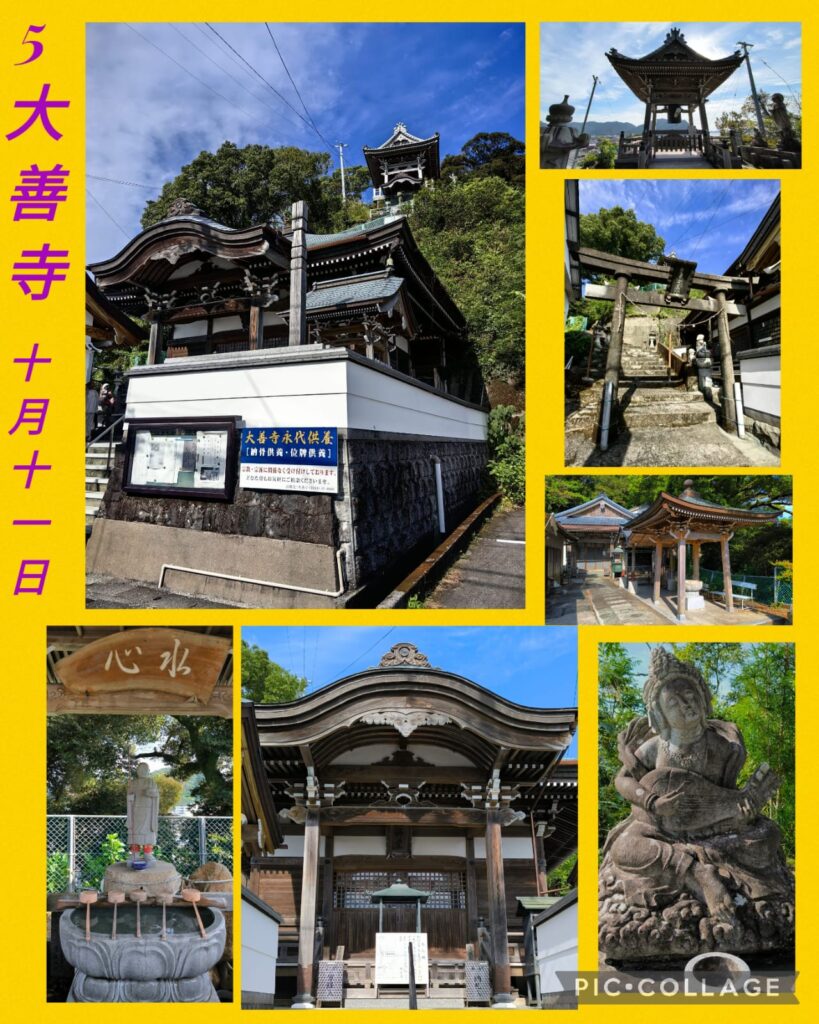
Temple 5 Daizen-ji which Principle Image is Kobo Daishi, is the only site in Kochi. Over 1250 years ago, the sea inlet at Susaki was very wide and the current Daishi Hall site was a cape jutting out into the sea. At that time, people usually went over the mountains and could go around the edge of the two-stoned cape. Sea disasters were frequent and people who were unclean were said to sometimes encounter strange phenomena. When Daishi heard about this, he prayed on a large rock on the coast for the souls of those who had died in sea disasters, praying for safe travels on land and sea and built a temple which is the origin of the current Daishido. From the grounds in front of the main hall, one can see the Pacific Ocean below. Even today, Kobo Daishi prays for everyone’s eternal happiness on top of the two rocks.
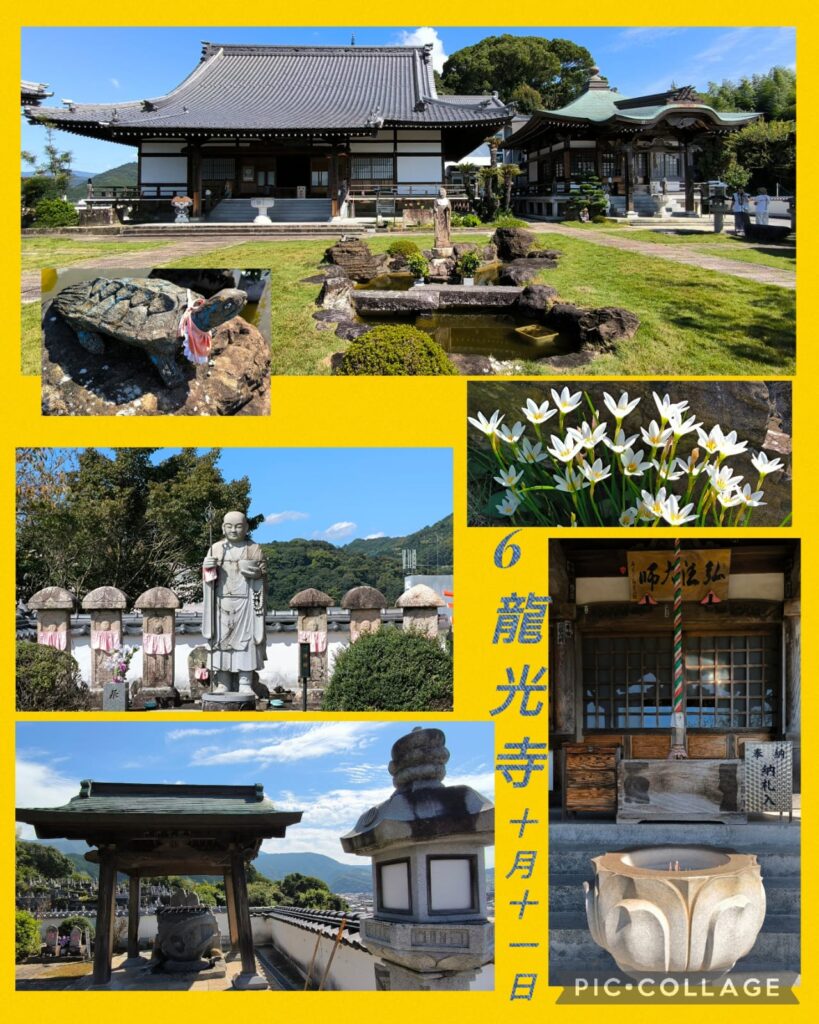
Daishi lived in various parts of Shikoku while training, received cultural blessings from the cities he visited, requested the creation of 88 spiritual halls in Shikoku. In the year of Daido, his personal wish came to fruition: Temple 6 Ryukoin was built in 1615 in commemoration by Hidemune Date, the first feudal lord upon his entry to Uwajima, to ensure the peace and security of the domain and its people. The Principle Image is Juichimen- kanseon-bosatsu.
After lunch, we proceeded to Temple 7 Kinzan Shusseki-ji which Principle Image is Senju-kanseon-bosatsu. The temple was founded in 718. A hunter followed a deer up this mountain. When he was about to shoot it, the whole mountain shook and a brilliant light shone. The deer disappeared and the rock under its feet split into two and the statutes of the Thousand-Armed Kannon Bodhisattva ( Senju-kanseon-bosatsu) and Jizo Bodhisattva emerged from the ground emitting a golden light. The hunter gave up hunting and became a Buddhist. Daishi during his visit to this place praised the statue as “the most beautiful gold mine in the three countries” and sealed it in a stone chamber as a secret Buddha.
It was almost 5 pm when we arrived at the location of a former earthen bridge over a stream where Daishi had spent a night and that one night felt like ten nights. This is the raison d’etre of Temple 8 Toyogahashi Eitoku-ji ( Principle Image – Miroku- bosatsu) that was badly damaged during a flood in 2018. The main hall has been totally rebuilt and the Daishi Hall next to the stream has been renovated.
Today, I took a few photos of the countryside in Kochi, the Shimanto River and the coastline. I watched sunset from the coach. During a brief stop, we met an elderly Japanese man drinking sake and having sashimi by a beach. A simple but most wonderful way to enjoy life!
October 12: 7 Temples- Temple 9-14 in Ehime and 16 in Kagawa
Guided by Bodhisattva Manjusri, Daishi had stayed in Temple 9 Monjuin with Jizo-bosatsu and Monju-bosatsu and enlightened the people. Kono Emon Saburo who realized his sin after losing eight children, set out on a pilgrimage to repent and apologize to Daishi. This was the beginning of his pilgrimage and after eight years and 21 pilgrimages to the sacred sites of Shikoku, he finally met Daishi again. Later Daishi reincarnated Emon Saburo as the lord of Iyo Province and ruled well. In later years, the temple was moved to Emon Saburo’s former residence and became the Kono family’s temple.
Temple 10 Nishiyama Koryu-ji covering an expansive ground on West Hill founded by monk Kuhachi in 642, is a gem with many scenic spots and nationally designated important tangible cultural property. It was visited by Daishi and highly revered by imperial families, military commanders and feudal lords, and local believers. The Principle Image is Juichimen- senju-sengen-kanseon-bosatsu. We had a beautiful walk to the main hall and the three-story pagoda. This was a highlight of the day!
Temple 11 Ikiki Jizo (Living Wood Jizo) has an interesting legend. Daishi slept one night at Mt Shio and saw a brilliant light on the mountain. At dawn he saw the auspicious large camphor tree. A boy appeared and the Buddha spoke to him saying, “The boy’s incarnation will show me”. That night Daishi struck the camphor tree with his sacred sword, making three bows and carved a sacred statute of Enmei Jizo Daibosatsu which becomes the principal image of this temple. On September 26, 1954, the sacred camphor tree was blown down by strong winds but the Jizo statue did not fall: it still stands in the Main Hall today.
After a short drive, we reached Temple 12 Enmei-ji which Principle Image is Enmei-jizo-bisatsu. Daishi found a certain Izari Pine tree at this temple taking pity on her and created an Awl Amulet. He gave one to Izari and due to subtle miracle, she immediately recovered. She recited the Awl and was ordained as a monk. The Awl from that time still exists as a temple treasure. It is a vow that if you pray sincerely for this awl Amulet morning and evening, you will be relieved of all kinds of illness. You will also be praying for safe childbirth.
The spectacular and atmospheric Temple 13 Sennryu-ji perching on a cliff was founded by Kobo Daishi at the age of 42 when he climbed the mountain and enshrined Takizawa Daigongen and Kaiun Fudoson in Kongo Cave. He built a goma altar for health and disaster prevention, purify his body and mind in the “Kiyome-no-taki” waterfall every morning and evening, and made tow requests for “good luck protection” and “protection from insects and bountiful harvests”. He performed goma training for twenty-one days and then carved a statue of himself and enshrined it on the mountain. The principal image of the temple is Kobo Daishi and believers from all over the country visit the temple throughout the year.
Temple 14 Tsubakido which Principle Image is Enmei-jizo-bisatsu, was first built in 807 as a hermitage by Kuniji Koji. A traveling monk (Kobo Daishi) visited the hermitage on 15 October 815 and learnt about a terrible fever that spread and caused suffering to the residents. He gathered the residents and stuck his walking stick in the soil, prayed and sealed the disease in the soil along with the stick before leaving. Later, a camellia sprouted and grew upside down from the stick. Nowadays, faithful believers come to touch Daishi’s left hand with his/her right hand and then touch the parts of his/her body with problem.
Founded by Kobo Daishi during the Daido era, Temple 16 Hagiwara-ji is serene and elegant: it was the place of imperial consultation for Emperor Suzaku. Later it became a place of prayer for Lord Hosokawa. It has been the head temple of the Roppoken Shinkata school, the light of the law has been passed down and the Onza Goma ritual is famous. It is known as a famous spot for Hagi, with Hagi bush clover designated as a prefectural natural monument. There are also numerous temple treasures. The Principle Image of the temple is Karadasan-hibuse-jizo-bosatsu.
October 13: Temple 15 & 20 in Tokushima, and 17-19 in Kagawa
When I opened the curtain in the morning, I was thrilled to find clouds floating in the valley and at top of two mountain ranges. We sat off as usual at 8 am hoping to visit the last five temples today. First after a short drive, we reached the foothill of Temple 15 Hashikura-ji (Principle Image – Konpira-dai-gongen). We had a short ride on a cable car followed by a fairly long walk to the main temple. It is wonderful to find the Heart Sutra engraved into the long staircases lined with old trees. Very serene atmospheric!
Another interesting feature of this temple is the installations of the principle deities of the 88 Temples on a flat ground after the temple ground. By walking counter-clockwise this year, one can accumulate three times the merit. So I walked counter clockwise twice! I could have spent the whole morning in this temple.
Temple 17: Kanno-ji founded by Kobo Daishi, protects the Mannoike Pond with Yaskushi-nyorai as the Principle Image. In 1581,the temple was burnt down and became abandoned. In 1934, the Manno Daishi Associaiton was formed and rebuilt the temple marking the 1,100 anniversary of the death of Kobo Daishi. Here The Daishi Hall is open-air and unique: a Kobo Daishi copper statue stands on a small hilltop overlooking at the pond. Here we met an elderly pilgrim in shorts who chanted, sang Italian opera and rode a bicycle.
MY, our guide explained Temple 18 Kaigan-ji with Sho-kanzeon-bosatsu as the Principal Image, was the birth place of Kobo Daishi and his parents. The Main Hall looks relatively new. The Daishi Hall considered the inner sanctuary, which is quite a distance from the Main Hall, is atmospheric and ancient. It is said that one can see the birth basin. But I missed it. I also climbed a small hill with a two-storey pagoda a next to Daishi Hall.
Temple 19 Kozai-ji founded by the monk Gyoki in the Nara period was originally located at the foot of Mount Shoga and called Shoga-ji. Kobo Daishi rebuilt and moved it to the current location. The Principle Image is Enmei-jizo-bisatsu. The temple has a fairly complicated history rebuilt, relocated and renamed several times. It was selected as an imperial temple by Emperor Saga and during the reign of Emperor Suzaku, it was selected as a dangisho (a place to study for monks). It was rebuilt and named as Kozan-ji during the Kamakura period. It was relocated back to the current site during Manji era (1658-1661) and rebuilt in the Kanbun era (1661-1673). However most of the original seven buildings were lost in a fire and today, only the grand Main Hall, Daishi Hall and a couple of small structures remain. However, I can see its grandeur during its hey days. MY arranged our certificates here as the 86-year-old head of the temple writes beautifully.
We then raced to Temple 20 Otaki-ji which Principle Image is Nishiteru-dai-gongen. Located near the peak of Mt Otaki (940m above sea level), the temple is accessible by taking a narrow and winding for over half an hour. I almost had an upset stomach. We arrived at the temple just before 5pm and we were thrilled to complete the pilgrimage within four days. MY gave us the certificate of completion and we took photos in front of the temple while watching sunset. It took us almost an hour to reach the hotel.
October 14 Tokushima-Osaka-Hong Kong
We had a relaxing travel day. We departed at 8:30am returning to the same area where we purchased our stuff on the first day. We placed order for a Buddhist beads bracelet using the 20 beads obtained from each temple. Then we had a sumptuous lunch in the same private club where we had our 88-temple graduation lunch last November. The setting, presentation and quality of the food were both gorgeous. We set off for Kansai Airport after lunch. While the group CX flight was at 6:45pm, my cheap HK Express flight would not leave till 8:50pm. I had to spend over five hours at the airport. By the time I got home, it was after 12:30 am on October 15. I felt exhausted but was glad to be home after almost two months.
Remarks
I am pleased to have completed the 88-temple pilgrimage that I began in 2012 as well as the pilgrimage to 20 sacred sites on the occasion of the 1,250 anniversary of Kobo Daishi. I particularly like Temples 1 (Taisan-ji), 2 (Dogaku-ji), 7 (Shusseki-ji), 10 (Koryu-ji), 13(Senryu-ji), 15 (Hashikura-ji) and 16 (Hagiwara-ji). It would be wonderful to see foliage in Temples 7, 10, 13, 15 and 16. I hope to revisit some of the 108 temples one day. (to continue)


